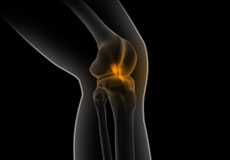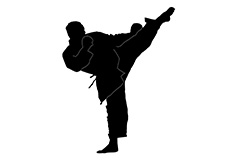What is Sports Medicine?

Sports Medicine, also known as sports and exercise medicine (SEM), is a branch of medicine that deals with the treatment and prevention of sports and exercise-related injuries and improving fitness and performance. The main objective of sports medicine is to help individuals engage in sports and exercise in a safe and effective manner to accomplish their training goals.
A sports medicine team may comprise medical and non-medical specialists, such as physicians, surgeons, athletic trainers, physical therapists, sports psychologists, nutritionists, coaches, and personal trainers. Most sports medicine physicians deal with non-operative musculoskeletal conditions. Others are orthopedic surgeons who have decided to focus their practice on the surgical treatment of sports injuries.
Sports medicine is not a medical specialty in itself. Most sports medicine doctors are certified in internal medicine, emergency medicine, family medicine, PM&R, or orthopedics and then acquire additional training with a 1-2-year fellowship in sports medicine to be certified as a sports medicine specialist.
Who are Sports Medicine Specialists?
Sports medicine specialists are medical doctors who specialize in the diagnosis and treatment of sports- or exercise-related injuries and illness. A sports medicine specialist focuses on the medical, therapeutic, and functional aspects of exercise and works directly with athletes to improve their overall sports performance. Although sports medicine specialists work exclusively with athletes, the majority will treat anyone who needs treatment for a sports or exercise-related injury.
Sports medicine specialists treat a wide range of physical conditions, including acute traumas such as fractures, sprains, strains, and dislocations. They also treat chronic overuse injuries including tendonitis, degenerative diseases, and overtraining syndrome.
What are Sports Injuries?
Sports injuries are injuries sustained while playing indoor or outdoor sports such as football, basketball, hockey, baseball, and tennis, or while exercising. Sports injuries can result from sports accidents, inadequate training, improper use of protective devices, or insufficient stretching or warm-up exercises. Common sports injuries include bone, muscle, ligament and tendon injuries that commonly involve joints such as the shoulders, knees, hips, ankles and feet.
Some of the common types of sports injuries treated by sports medicine specialists include:
- Anterior cruciate ligament (ACL) tears
- Concussion
- Fractures
- Knee cartilage injuries
- Meniscal tears
- Nerve compression injuries
- Patellar Tendonitis
- Medial collateral ligament (MCL)
- Ulnar collateral ligament (UCL)
- Shoulder dislocation
- Shoulder separation
- Sprains and strains
- Tennis elbow (lateral epicondylitis)
- Tendonitis
Treatment for Sports Injuries
Treatment includes management of bruises, strains and sprains, fractures, dislocations, even chronic injuries i.e. osteoarthritis.
Non-surgical or conservative treatment recommended for sports injuries used to be RICE (rest, ice, compression, elevation). However, a more evidenced based approach includes the new acronyms: PEACE & LOVE for acute injury recovery.
PEACE
- Protect
- Elevate
- Avoid NSAID’s
- Compress
- Educate
LOVE
- Load
- Optimism
- Visualization
- Exercise
The most common non-surgical or conservative treatment recommended for sports injuries include:
- Activity Modification: Avoiding activities that trigger symptoms and changing your lifestyle
- Physical Therapy: Regular exercise regimen to improve range of motion and strengthen muscles
- Injectable treatment options: In some instances, injectable treatment options may be used to reduce pain and/or enhance healing. Please see ultrasound guided procedures/injections to read more.
- Surgical treatment is employed when an individual has sustained serious sports injury by means of a severe fracture, bone displacement, and soft tissue tears not amenable to conservative treatment.
Prevention of Sports Injuries
Some of the measures employed and advised by sports medicine specialists to prevent sports-related injuries include:
- Follow an exercise program to strengthen your muscles.
- Gradually increase your exercise level and avoid overdoing the exercise.
- Ensure that you wear properly-fitted protective gear such as elbow guards, eye gear, face masks, mouth guards and pads, comfortable clothes, and athletic shoes before playing any sports activity, which will help reduce the chances of injury.
- Make sure that you follow warm-up and cool-down exercises before and after a sports activity. Exercises will help to stretch the muscles, increase flexibility and reduce soft tissue injuries.
- Avoid exercising immediately after eating a large meal.
- Maintain a healthy diet, which will help to nourish the muscles.
- Avoid playing when you are injured or tired. Take rest breaks after playing.
- Learn all the rules of the game you are participating in.
- Ensure that you are physically fit to play the sport.

Common Lacrosse Injuries
Lacrosse is one of the fastest-growing sports in the US. The sport requires a high level of coordination and agility. Each position requires an athlete with a slightly different skill set and therefore may predispose them to position specific injuries. As an example, attackers require explosive cutting movements and thoracic rotational speed when shooting and therefore are at risk for knee ligament injuries and back injuries.

Running Injuries
The iliotibial (IT) band begins at the outside (lateral) hip and crosses the lateral aspect of the knee. It is a common cause of sharp lateral knee pain in runners. This is due to friction between the IT band and lateral femoral epicondyle (located just above the knee), which leads to inflammation in this area.

Softball Pitching
How many times have we heard softball pitching is a “natural” motion? This is one of the reasons that although there has been a pitch count created for baseball, no rules have been put in place to limit pitches thrown by our young female athletes. Studies show, softball pitchers on average throw between 1200-2000 pitches / season.

Martial Arts Injuries
Martial arts are a broad range of self-defense practices which originated in Japan, Korea, and China. Martial arts include Karate, Kung Fu, Judo and Aikido. Martial arts injuries can range from minor cuts or bruises to severe injuries such as a bone fracture or chocking. Martial arts injuries may be caused due to falls, contacts or improper use of equipment.


